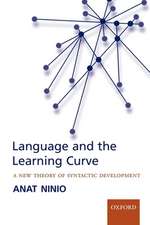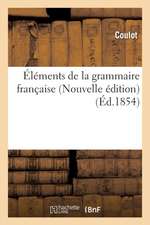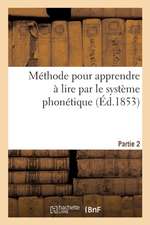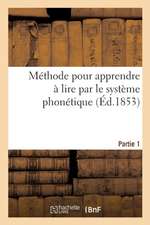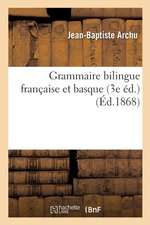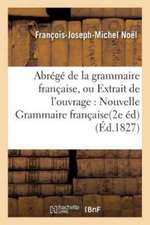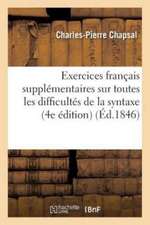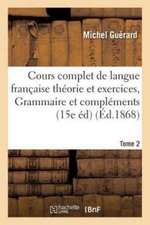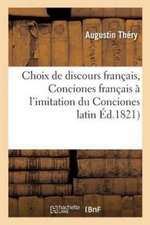The Linguistic Cycle: Economy and Renewal in Historical Linguistics
Autor Elly van Gelderenen Limba Engleză Paperback – 31 iul 2023
With coverage of a variety of micro cycles and the more controversial macro cycles, incorporating cutting-edge work on grammaticalization, and drawing on examples from many languages and language families, this book accessibly guides readers through the state of the art in the field. With practical methodological guidance on how to identify and investigate linguistic cycles, and an array of useful pedagogical features, the book provides a coherent framework for approaching, understanding, and furthering research in linguistic cycles.
This text will be an indispensable resource for advanced students and researchers in historical and diachronic linguistics, language typology, and linguistic and grammatical theory.
| Toate formatele și edițiile | Preț | Express |
|---|---|---|
| Paperback (2) | 311.41 lei 3-5 săpt. | +22.67 lei 7-13 zile |
| Taylor & Francis – 31 iul 2023 | 311.41 lei 3-5 săpt. | +22.67 lei 7-13 zile |
| Oxford University Press – 26 mai 2011 | 397.17 lei 31-38 zile | |
| Hardback (2) | 429.53 lei 31-38 zile | |
| Oxford University Press – 26 mai 2011 | 429.53 lei 31-38 zile | |
| Taylor & Francis – 31 iul 2023 | 1000.27 lei 6-8 săpt. |
Preț: 311.41 lei
Nou
Puncte Express: 467
Preț estimativ în valută:
59.59€ • 62.21$ • 49.32£
59.59€ • 62.21$ • 49.32£
Carte disponibilă
Livrare economică 14-28 martie
Livrare express 28 februarie-06 martie pentru 32.66 lei
Preluare comenzi: 021 569.72.76
Specificații
ISBN-13: 9781032224329
ISBN-10: 1032224320
Pagini: 272
Ilustrații: 34 Tables, black and white; 21 Line drawings, black and white; 21 Illustrations, black and white
Dimensiuni: 152 x 229 x 20 mm
Greutate: 0.45 kg
Ediția:1
Editura: Taylor & Francis
Colecția Routledge
Locul publicării:Oxford, United Kingdom
ISBN-10: 1032224320
Pagini: 272
Ilustrații: 34 Tables, black and white; 21 Line drawings, black and white; 21 Illustrations, black and white
Dimensiuni: 152 x 229 x 20 mm
Greutate: 0.45 kg
Ediția:1
Editura: Taylor & Francis
Colecția Routledge
Locul publicării:Oxford, United Kingdom
Public țintă
Postgraduate and Undergraduate AdvancedCuprins
Preface
List of Tables
List of Figures
Abbreviations
1 Introduction
1 What is the linguistic cycle?
2 What kinds of cycles exist?
3 How and why to study cyclical change
3.1 The practical side
3.2 The theoretical side
4 Major questions in the study of cycles
5 Terminology
6 Conclusion and outline
Suggestions for further reading
Review questions and exercises
2 History
1 The late eighteenth and early nineteenth centuries
2 The late nineteenth and early twentieth centuries
3 The mid and late twentieth century
4 Recent generative work
5 Recent functionalist work
6 Conclusion
Suggestions for further reading
Review questions
3 Micro cycles: Determiner and Verbal Cycles
1 Definition of a micro cycle
2 Determiner Cycles
3 Copula Cycles
4 Tense and Aspect Cycles
4.1 The Imperfective Cycle
4.2 The Perfective Cycle
4.3 Imperfective and perfective renewal in Basque
5 Mood Cycles
6 Voice Cycles
7 Conclusion
Suggestions for further reading
Review questions and exercises
4 Micro cycles: Polarity and Discourse Cycles
1 Negative Cycles
1.1 Jespersen’s Negative Cycle
1.2 Givón’s Negative Cycle
1.3 Croft’s Negative Cycle
2 Interrogative Cycles
3 Complementizer Cycles
4 Pragmatic Cycles
4.1 A definition
4.2 Temperal adverbs as sources
4.3 Emphatic Pronoun Cycles
5 Interactions between micro cycles
6 Conclusions
Suggestions for further reading
Review questions and exercises
5 Macro cycles
1 Definition of a macro cycle
2 Analytic to synthetic to analytic
3 Pronoun Cycles
3.1 Subject Cycle
3.2 Object Cycle
3.3 Morpheme Order
4 Case Cycles
5 Interactions involving macro cycles
6 Conclusions
Suggestions for further reading
Review questions and exercises
Appendix
6 Explanations and mechanisms
1 Clarity vs comfort
2 External factors
3 Construction Grammar
4 Early Minimalism: structural and featural economy
5 Later Minimalism: labeling and determinacy
6 Attractor states
7 Conclusions
Suggestions for further reading
Review questions and exercises
7 Conclusions and future directions
1 Insights from cycles
2 Criticisms of the cycle
3 Future directions
Suggested answers to the review questions and exercises
References
Indices
List of Tables
List of Figures
Abbreviations
1 Introduction
1 What is the linguistic cycle?
2 What kinds of cycles exist?
3 How and why to study cyclical change
3.1 The practical side
3.2 The theoretical side
4 Major questions in the study of cycles
5 Terminology
6 Conclusion and outline
Suggestions for further reading
Review questions and exercises
2 History
1 The late eighteenth and early nineteenth centuries
2 The late nineteenth and early twentieth centuries
3 The mid and late twentieth century
4 Recent generative work
5 Recent functionalist work
6 Conclusion
Suggestions for further reading
Review questions
3 Micro cycles: Determiner and Verbal Cycles
1 Definition of a micro cycle
2 Determiner Cycles
3 Copula Cycles
4 Tense and Aspect Cycles
4.1 The Imperfective Cycle
4.2 The Perfective Cycle
4.3 Imperfective and perfective renewal in Basque
5 Mood Cycles
6 Voice Cycles
7 Conclusion
Suggestions for further reading
Review questions and exercises
4 Micro cycles: Polarity and Discourse Cycles
1 Negative Cycles
1.1 Jespersen’s Negative Cycle
1.2 Givón’s Negative Cycle
1.3 Croft’s Negative Cycle
2 Interrogative Cycles
3 Complementizer Cycles
4 Pragmatic Cycles
4.1 A definition
4.2 Temperal adverbs as sources
4.3 Emphatic Pronoun Cycles
5 Interactions between micro cycles
6 Conclusions
Suggestions for further reading
Review questions and exercises
5 Macro cycles
1 Definition of a macro cycle
2 Analytic to synthetic to analytic
3 Pronoun Cycles
3.1 Subject Cycle
3.2 Object Cycle
3.3 Morpheme Order
4 Case Cycles
5 Interactions involving macro cycles
6 Conclusions
Suggestions for further reading
Review questions and exercises
Appendix
6 Explanations and mechanisms
1 Clarity vs comfort
2 External factors
3 Construction Grammar
4 Early Minimalism: structural and featural economy
5 Later Minimalism: labeling and determinacy
6 Attractor states
7 Conclusions
Suggestions for further reading
Review questions and exercises
7 Conclusions and future directions
1 Insights from cycles
2 Criticisms of the cycle
3 Future directions
Suggested answers to the review questions and exercises
References
Indices
Notă biografică
Elly van Gelderen is Regents’ Professor of English and Linguistics at Arizona State University, USA. Her most recent books include The Linguistic Cycle: Language Change and the Language Faculty (2011), The Diachrony of Meaning (2018), and Third Factors in Language Variation and Change (2022).
Descriere
Cyclical language change is a linguistic process by which a word, phrase, or part of the grammar loses its meaning or function and is then replaced by another. This new text is a comprehensive introduction to this phenomenon.


